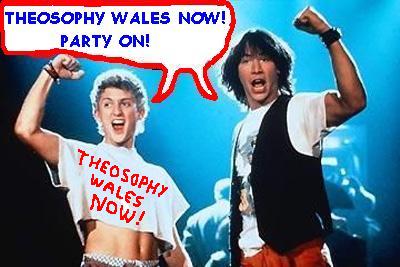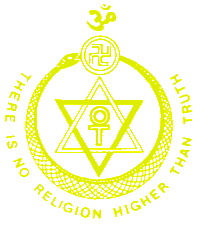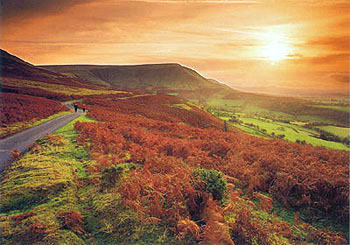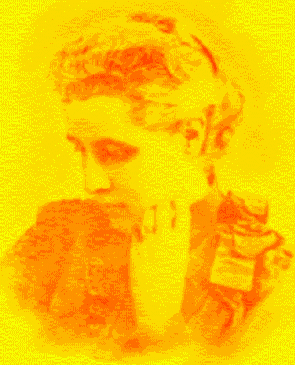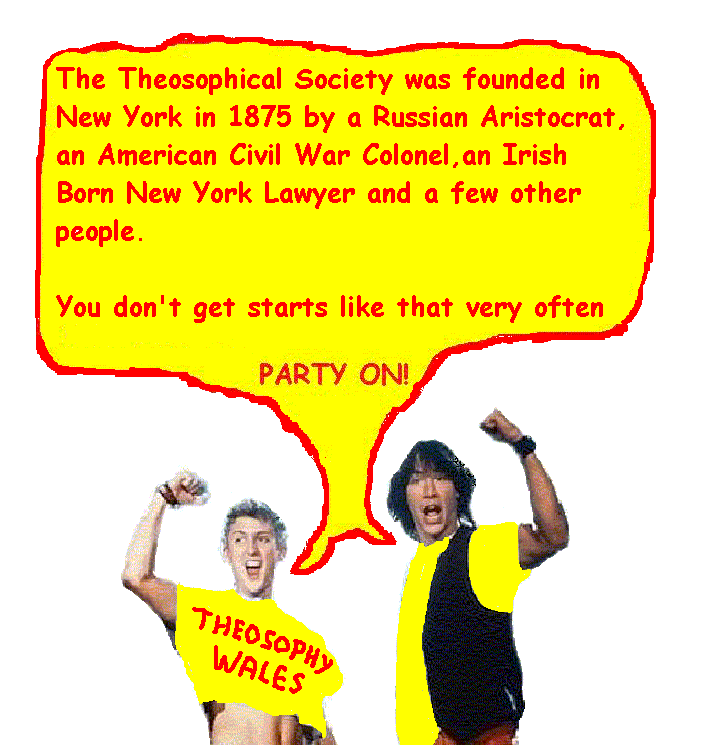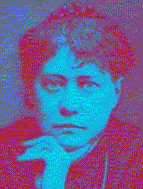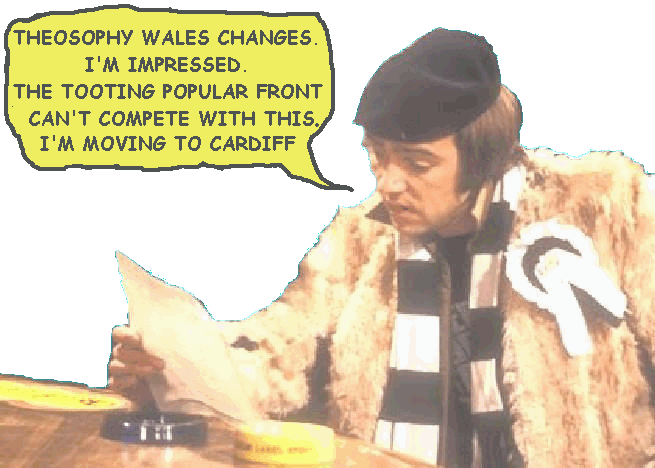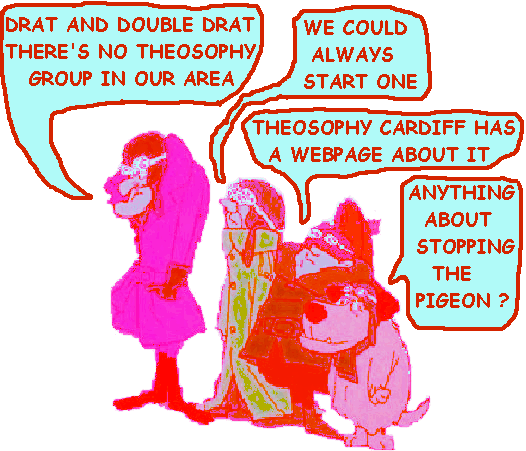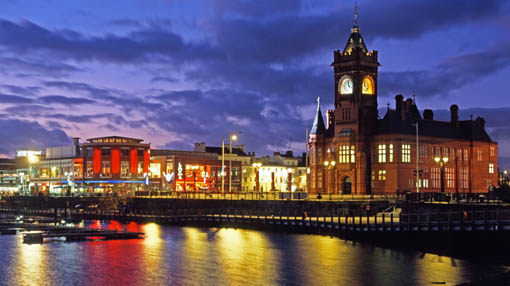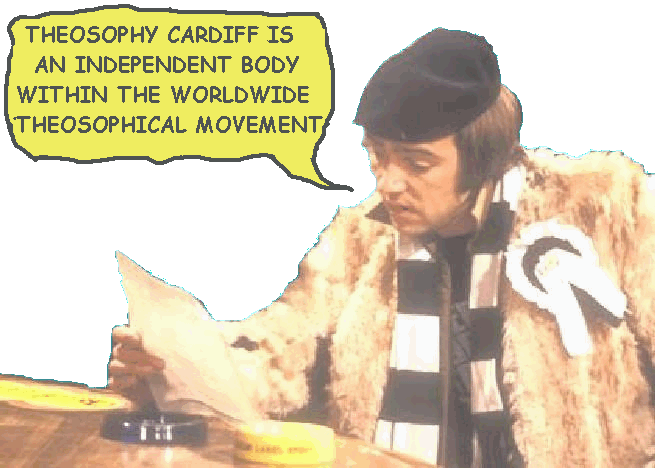NOW!
THE
THEOSOPHY WALES WEBSITE
THAT
JUST WON’T WAIT
Bangor, Cardiff,
Conwy & Swansea
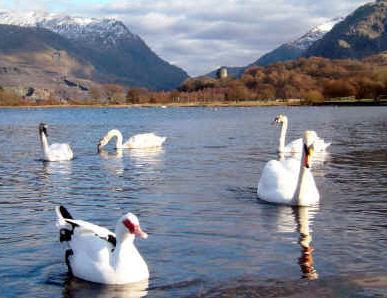
Swans
at Llyn Padarn,
Snowdonia,
Theosophy Wales has no controlling
body
and is made up of
independent groups
Sunset
over Gospel Pass in the black Mountains
in
South East Wales near the border with Herefordshire, England.
_________________
The
Seven Principles of Man
By
Annie
Besant
Principle IV
The Desire Body
In building
up our man we have now reached the principle sometimes described as the animal
soul, in Theosophical parlance Kâma Rûpa, or the desire-body. It belongs to in
constitution, and functions on, the second or astral plane. It includes the
whole body of appetites, passions, emotions, and desires which come under the
head of instincts, sensations, feelings and emotions, in our Western
psychological classification, and are dealt with as a subdivision of mind.
In Western
psychology mind is divided – by the modern school – into three main groups,
feelings, will, intellect. Feelings are again divided into sensations and
emotions , and these are divided and subdivided under numerous heads. Kâma, or
desire, includes the whole group of "feelings," and might be
described as our passional and emotional nature.
All animal
needs, such as hunger, thirst, sexual desire, come under it; all passions, such
as love (in its lower sense), hatred, envy, jealousy. It is the desire for
sentient experience, for experience of material joys – "the lust of the
flesh, the lust of the eyes, the pride of life".
This
principle is the most material in our nature, it is the one that binds us fast
to earthly life. "It is not molecularly constituted matter, least of all the
human body, Sthula Sharira, that is the grossest of all our ‘principles’ but
verily the middle principle, the real animal centre ; whereas our body is but
its shell, the irresponsible factor and medium through which the beast in us
acts all its life" ( Secret Doctrine, vol. I, p. 280-81).
United to the
lower part of Manas, the mind, as Kâma-Manas, it becomes the normal human
brain-intelligence, and that aspect of it will be dealt with presently.
Considered by itself, it remains the brute in us, the "ape and tiger"
of Tennyson, the force which most avails to keep us bound to earth and to
stifle in us all higher longings by the illusions of sense.
Kâma joined
to Prâna is, as we have seen, the "breath of life," the vital
sentient principle spread over every particle of the body. It is, therefore,
the seat of sensation, that which enables the organs of sensation to function.
We have already noted that the physical organs of sense, the bodily instruments
that come into immediate contact with the external world, are related to the
organs of sensation in the etheric double (ante p. 14).
But these
organs would be incapable of functioning did not Prâna make them vibrant with
activity, and their vibrations would remain vibrations only, motion on the
material plane of the physical body, did not Kâma, the principle of sensation
translate the vibration into feeling. Feeling indeed, is consciousness on the
kâmic plane, and when a man is under the domination of a sensation or a
passion, the Theosophist speaks of him as on the kâmic plane, meaning thereby
that his consciousness is functioning on that plane.
For instance,
a tree may reflect rays of light, that is ethereal vibrations, and these
vibrations striking on the outer eye will set up vibrations in the physical
nerve-cells ; these will be propagated as vibrations to the physical and on to
the astral centres, but there is no sight of the tree until the seat of the
sensation is reached, and Kâma enables us to perceive.
Matter of the
astral plane – including that called elemental essence – is the material of
which the desire-body is composed, and it is the peculiar properties of this
matter which enable it to serve as the sheath in which the Self can gain
experience of sensation. (The constitution of the elemental essence would lead
us too far from an elementary treatise).
The desire –
body, or astral body, as it is often called, has the form of a mere cloudy mass
during the earlier stages of evolution, and is incapable of serving as an
independent vehicle of consciousness. During deep sleep it escapes from the
physical body, but remains near it, and the mind within it is almost as much
asleep as the body. It is, however, liable to be affected by forces of the
astral plane akin to its own constitution, and gives rise to dreams of a
sensuous kind.
In a man of
average intellectual development the desire-body has become more highly
organised, and when separated from the physical body is seen to resemble it is
outline and features ; even then, however, it is not conscious of its
surroundings on the astral plane, but encloses the mind as a shell, within
which the mind may actively function, while not yet able to use it as an
independent vehicle of consciousness.
Only in the
highly evolved man does the desire-body become thoroughly organised and
vitalised, as much the vehicle of consciousness on the astral plane as the
physical body is on the physical plane.
After death,
the higher part of man dwells for awhile in the desire-body, the length of its
stay depending on the comparative grossness or delicacy of its constituents.
When the man escapes from it, it persists for a time as a "shell" and
when the departed entity is of a low type, and during earth life infused such
mentality as it possessed into the passional nature, some of this remains
entangled with the shell.
It then
possesses consciousness of a very low order, has brute cunning, is without
conscience – an altogether objectionable entity, often spoken of as a
"spook." It strays about, attracted to all places in which animal
desires are encouraged and satisfied, and is drawn into the currents of those
whose animal passions are strong and unbridled.
Mediums of
low type inevitably attract these eminently undesirable visitors, whose fading
vitality is reinforced in their séance rooms, who catch astral reflections, and
play the part of "disembodied spirits" of a low order. Nor is this
all; if at such a séance there be present some man or woman of correspondingly
low development, the spook will be attracted to that person, and may attach
itself to him or to her, and thus may be set up currents between the
desire-body of the living person and the dying desire-body of the dead person,
generating results of the most deplorable kind.
The longer or
shorter persistence of the desire-body as a shell or a spook depends on the
greater or less development of the animal and passional nature in the dying
personality. If during earth-life the animal nature was indulged and allowed to
run riot, if the intellectual and spiritual parts of man were neglected or
stifled, then, as the life-currents were set strongly in the direction of
passion, the desire-body will persist for a long period after the body of the
person is dead.
Or again, if
earth-life has been suddenly cut short by accident or by suicide, the link
between Kâma and Prâna will not be easily broken, and the desire-body will be
strongly vivified. If, on the other hand, desire has been conquered and bridled
during earth-life, if it has been purified and trained into subservience to
man’s higher nature, then there is but little to energise the desire-body and
it will quickly disintegrate and dissolve away.
There remains
one other fate, terrible in its possibilities, which may befall the fourth principle,
but it cannot be clearly understood until the fifth principle has been dealt
with.
____________________________
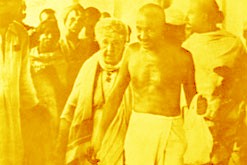
Annie
Besant with Mahatma Gandhi
___________________________
_____________________________
Find out more about
with these links
Cardiff Theosophical Society meetings are informal
and there’s always a cup of tea afterwards
The Cardiff Theosophical Society Website
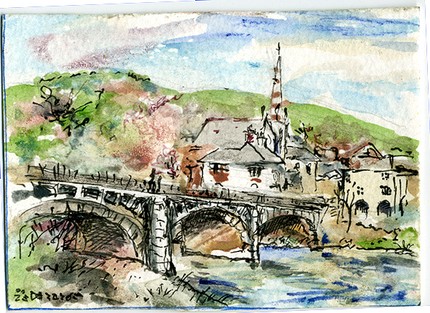
Newtown, Powys, Mid
The National Wales Theosophy Website
Bangor, Cardiff, Conwy & Swansea

The
Hayes
Cardiff
City Centre
If you
run a Theosophy Group, please feel free
to use
any of the material on this site
The Most Basic Theosophy
Website in the Universe
A quick overview of Theosophy
and the Theosophical Society
If you run a Theosophy Group you
can use this as an introductory handout.
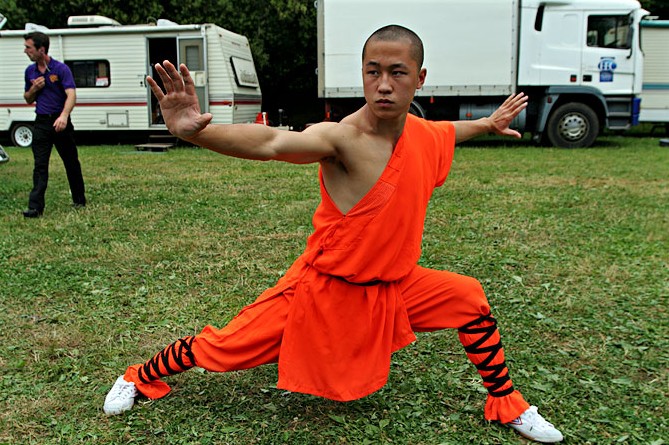
Shaolin Student
Pontcanna Fields,
Theosophy Cardiff’s Instant Guide
Theosophical
Movement in Wales
as it separates
into independent
groups that run
do their own show
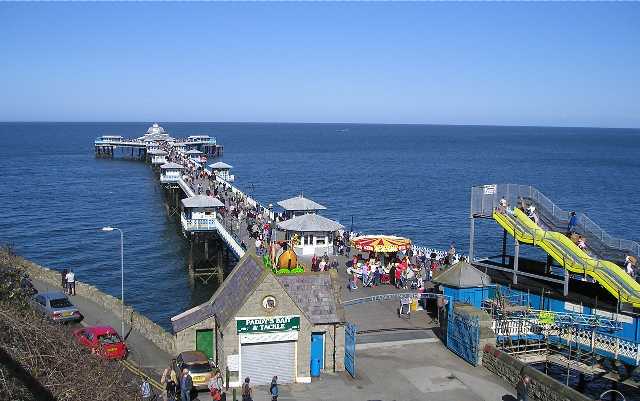
Llandudno Pier
One liners and quick explanations
H P Blavatsky is
usually the only
Theosophist that
most people have ever
heard of. Let’s put
that right

Beddgelert,
Snowdonia,
The Voice of the Silence Website
An Independent Theosophical Republic
Links to Free Online Theosophy
Study Resources; Courses,
Writings,
The main criteria
for the inclusion of
links on this
site is that they have some
relationship
(however tenuous) to Theosophy
and are
lightweight, amusing or entertaining.
Topics include
Quantum Theory and Socks,
Dick Dastardly and Legendary Blues Singers.
A selection of
articles on Reincarnation
Provided in
response to the large
number of
enquiries we receive at
Cardiff
Theosophical Society on this subject

Punch & Judy Show, Llandudno.
The same family has run this show since 1860
The Voice of the Silence Website

Rhayader
Mid

Cader
Idris, Mid Wales.
A
Winter View
This is for
everyone, you don’t have to live
in Wales to
make good use of this Website
The Old Severn Bridge at night
If you are travelling to Wales along the M4, you
can cross on the
Old Severn Bridge (opened 1966) by taking the M48,
which will take
you over the bridge and back on to the M4. You can
also cross this
bridge on foot, horse or bike by using the service
roads on
either side. Don’t try this on the new Severn
Bridge
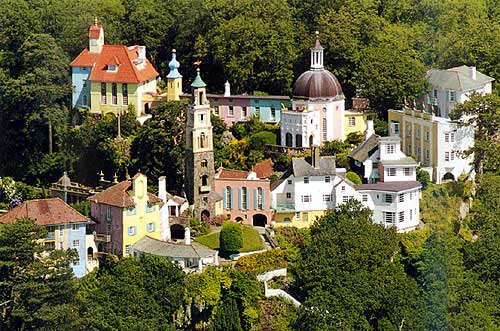
Port Meirion,
Setting of the cult 1960s TV series,
The Prisoner
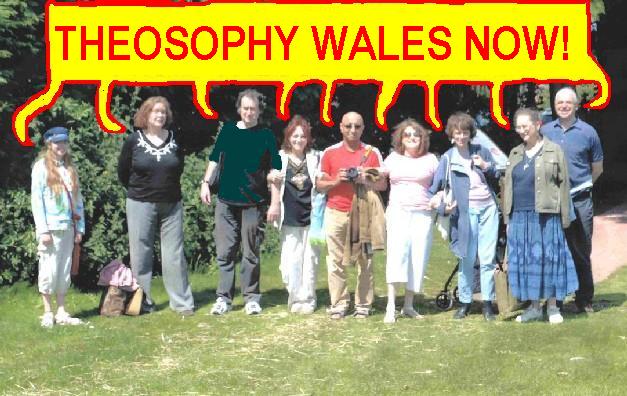
Cardiff Theosophists on an outing to
Caerleon in Gwent,
South Wales.
No
Aardvarks were harmed in the
Within the British
Isles, The Adyar Theosophical Society has Groups in;
Bangor*Basingstoke*Billericay*Birmingham*Blackburn*Bolton*Bournemouth
Bradford*Bristol*Camberley*Cardiff*Chester*Conwy*Coventry*Dundee*Edinburgh
Folkstone*Glasgow*Grimsby*Inverness*Isle
of Man*Lancaster*Leeds*Leicester
Letchworth*London*Manchester*Merseyside*Middlesborough*Newcastle
upon Tyne
North
Devon*Northampton*Northern Ireland*Norwich*Nottingham
Perth*Republic of
Ireland*Sidmouth*Southport*Sussex*Swansea*Torbay
Tunbridge
Wells*Wallasey*Warrington*Wembley*Winchester*Worthing
The Spiritual Home of Urban Theosophy
The Earth Base for Evolutionary Theosophy
A B C D EFG H IJ KL M N OP QR S T UV WXYZ
Complete Theosophical Glossary in Plain Text Format
1.22MB
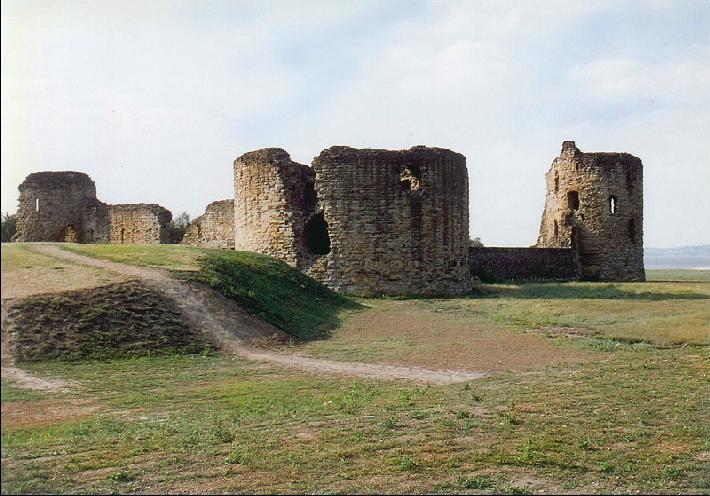
Flint
Castle, North Wales.
______________________
Quick Explanations
with Links to More Detailed Info
What is Theosophy ? Theosophy Defined (More Detail)
Three Fundamental Propositions Key Concepts of Theosophy
Cosmogenesis
Anthropogenesis
Root Races
Karma
Ascended Masters After Death States Reincarnation
The Seven Principles of Man Helena Petrovna Blavatsky
Colonel Henry Steel Olcott William Quan Judge
The Start of the Theosophical Society
History of the Theosophical Society
Theosophical Society Presidents
History of the Theosophical Society in Wales
The Three Objectives of the Theosophical Society
Explanation of the Theosophical Society Emblem
Glossaries of Theosophical Terms

The
Tabernacle, Efail Isaf,
Mid-Glamorganshire,
______________________
An Outstanding
Introduction to Theosophy
By a student of
Katherine Tingley
Elementary Theosophy Who is the Man? Body and Soul
Body, Soul and Spirit Reincarnation Karma

Coleg Menai Performing Art students
as ‘human statues’ in Bangor High Street.
This
idea began in Covent Garden and spread
round
Britain.
____________________
What Theosophy Is From the Absolute to Man
The Formation of a Solar System The Evolution of Life
The Constitution of Man After Death Reincarnation
The Purpose of Life The Planetary Chains
The Result of Theosophical Study
An
Outline of Theosophy
Charles
Webster Leadbeater
Theosophy - What it is How is it Known? The Method of Observation
General Principles The Three Great Truths The Deity
Advantage Gained from this
Knowledge The Divine Scheme
The Constitution of Man The True Man Reincarnation
The Wider Outlook Death Man’s Past and Future
Cause and Effect What Theosophy does for us
The Unity Underlying all Religions
The Physical
Plane The Astral Plane
Kamaloka The Mental Plane Devachan
The Buddhic and
Nirvanic Planes Reincarnation Karma
The Three Kinds of Karma Collective Karma
The Law of
Sacrifice Man’s Ascent Building a
Cosmos
Annotated Edition Published 1885
Preface to the Annotated Edition Preface to the Original Edition
Esoteric Teachers The Constitution of Man The Planetary Chain
The World Periods Devachan
Kama Loca
The Human Tide-Wave The Progress of Humanity
Buddha Nirvana The Universe
The Doctrine Reviewed
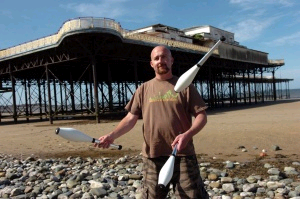
A
Juggler in action on Colwyn Bay beach
at
the 2009 Welsh Juggling convention
held
on the pier.
Helena Petrovna Blavatsky 1831 – 1891
The Founder of Modern Theosophy
Index of Articles by
By
H P Blavatsky
Is the Desire to Live Selfish?
Ancient Magic in Modern Science
Precepts Compiled by H P Blavatsky
Obras Por H P Blavatsky
En Espanol
Articles about the Life of H P Blavatsky
Try
these if you are looking for a local
Theosophy
Group or Centre
UK Listing of Theosophical Groups
Please tell us about your UK Theosophy Group
_______________________
Your Own
Theosophy Group Starts Here
A Guide to
starting your own
Theosophy Group
These are
suggestions and pointers for forming
your own
independent Theosophy Group and
not instructions on
how to form a branch of a
larger Theosophical Organisation.
The subject of
affiliation to a larger body is
covered but as
affiliation may mean compromise
and nobody owns
Theosophy anyway, we leave
that decision entirely up to you
_____________________
Tekels Park to be Sold to a Developer
Concerns are
raised about the fate of the wildlife as
The Spiritual
Retreat, Tekels Park in Camberley,
Surrey, England
is to be sold to a developer.
Tekels Park is a
50 acre woodland park, purchased
for the Adyar Theosophical Society in England
in 1929.
In addition to
concern about the park, many are
worried about the future of the Tekels Park
Deer
as they are not a
protected species.
____________________
Cardiff Bay at Sunset
___________________
into categories and presented according to relevance of
website.
Web Directory - Add Link - Submit Article - Online Store - Forum

The
The
Menai Bridge links the Island of Anglesey
with
the North Wales coast
______________________
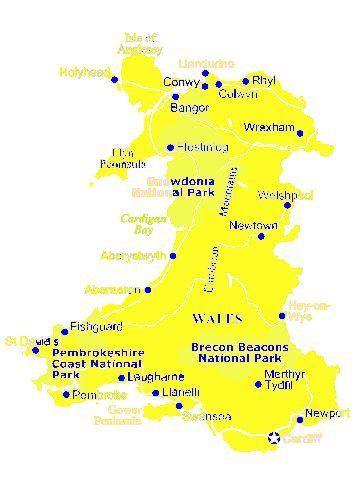
General pages about
Wales, Welsh History
and The History
of Theosophy in Wales
Wales is a Principality
within the United Kingdom and has an eastern
border with
England. The land area is just over 8,000 square miles.
Snowdon in North
Wales is the highest mountain at 3,650 feet.
The coastline is almost
750 miles long. The population of Wales
as at the 2001 census is 2,946,200.
________________
Bangor Conwy
& Swansea Lodges are members
of the Welsh
Regional Association (Formed 1993).
Theosophy Cardiff
separated from the Welsh Regional
Association in
March 2008 and became an independent
body within the Theosophical Movement in March 2010
High
Drama & Worldwide Confusion
as Theosophy Cardiff Separates from the
Welsh Regional Association (formed 1993)
Theosophy Cardiff cancels its Affiliation
to the Adyar Based Theosophical Society
Nature is infinite in space and
time -- boundless and eternal, unfathomable and ineffable. The all-pervading
essence of infinite nature can be called space, consciousness, life, substance,
force, energy, divinity -- all of which are fundamentally one.
2) The finite and the infinite
Nature is a unity in
diversity, one in essence, manifold in form. The infinite whole is composed of
an infinite number of finite wholes -- the relatively stable and autonomous
things (natural systems or artefacts) that we observe around us. Every natural
system is not only a conscious, living, substantial entity, but is
consciousness-life-substance, of a particular range of density and form.
Infinite nature is an abstraction, not an entity; it therefore does not act or
change and has no attributes. The finite, concrete systems of which it is
composed, on the other hand, move and change, act and interact, and possess
attributes. They are composite, inhomogeneous, and ultimately transient.
3)
Vibration/worlds within worlds
The one essence manifests not
only in infinitely varied forms, and on infinitely varied scales, but also in
infinitely varying degrees of spirituality and substantiality, comprising an
infinite spectrum of vibration or density. There is therefore an endless series
of interpenetrating, interacting worlds within worlds, systems within systems.
The energy-substances of
higher planes or subplanes (a plane being a particular range of vibration) are
relatively more homogeneous and less differentiated than those of lower planes
or subplanes.
Just as boundless space is
comprised of endless finite units of space, so eternal duration is comprised of
endless finite units of time. Space is the infinite totality of worlds within
worlds, but appears predominantly empty because only a tiny fraction of the
energy-substances composing it are perceptible and tangible to an entity at any
particular moment. Time is a concept we use to quantify the rate at which
events occur; it is a function of
change and motion, and
presupposes a succession of cause and effect. Every entity is extended in space
and changes 'in time'.
All change (of position,
substance, or form) is the result of causes; there is no such thing as absolute
chance. Nothing can happen for no reason at all for nothing exists in
isolation; everything is part of an intricate web of causal interconnections and
interactions. The keynote of nature is harmony: every action is automatically
followed by an equal and opposite reaction, which sooner or later rebounds upon
the originator of the initial act. Thus, all our thoughts and deeds will
eventually bring us 'fortune' or 'misfortune' according to the degree to which
they were harmonious or disharmonious. In the long term, perfect justice
prevails in nature.
Because nature is
fundamentally one, and the same basic habits and structural, geometric, and
evolutionary principles apply throughout, there are correspondences between
microcosm and macrocosm. The principle of analogy -- as above, so below -- is a
vital tool in our efforts to understand reality.
All finite systems and their
attributes are relative. For any entity, energy-substances vibrating within the
same range of frequencies as its outer body are 'physical' matter, and finer
grades of substance are what we call energy, force, thought, desire, mind,
spirit, consciousness, but these are just as material to entities on the
corresponding planes as our physical world is to us. Distance and time units
are also relative: an atom is a solar system on its own scale, reembodying perhaps
millions of times in what for us is one second, and our whole galaxy may be a
molecule in some supercosmic entity, for which a million of our years is just a
second. The range of scale is infinite: matter-consciousness is both infinitely
divisible and infinitely aggregative.
All natural systems consist
of smaller systems and form part of larger systems. Hierarchies extend both
'horizontally' (on the same plane) and 'vertically' or inwardly (to higher and
lower planes). On the horizontal level, subatomic particles form atoms, which
combine into molecules, which arrange themselves into cells, which form tissues
and organs, which form part of organisms, which form part of ecosystems, which
form part of planets, solar systems, galaxies, etc. The constitution of worlds
and of the organisms that inhabit them form 'vertical' hierarchies, and can be
divided into several interpenetrating layers or elements, from physical-astral
to psychomental to spiritual-divine, each of which can be further divided.
The human constitution can be
divided up in several different ways: e.g. into a trinity of body, soul, and
spirit; or into 7 'principles' -- a lower quaternary consisting of physical
body, astral model-body, life-energy, and lower thoughts and desires, and an
upper triad consisting of higher mind (reincarnating ego), spiritual intuition,
and inner god. A planet or star can be regarded as a 'chain' of 12 globes, existing
on 7 planes, each globe comprising several subplanes.
The highest part of every
multilevelled organism or hierarchy is its spiritual summit or 'absolute',
meaning a collective entity or 'deity' which is relatively perfected in
relation to the hierarchy in question. But the most 'spiritual' pole of one
hierarchy is the most 'material' pole of the next, superior hierarchy, just as
the lowest pole of one hierarchy is the highest pole of the one below.
Each level of a hierarchical
system exercises a formative and organizing influence on the lower levels
(through the patterns and prototypes stored up from past cycles of activity),
while the lower levels in turn react upon the higher. A system is therefore
formed and organized mainly from within outwards, from the inner levels of its
constitution, which are relatively more enduring and developed than the outer
levels. This inner guidance is sometimes active and selfconscious, as in our
acts of free will (constrained, however, by karmic tendencies from the past),
and sometimes it is automatic and passive, giving rise to our own automatic
bodily functions and habitual and instinctual behavior, and to the orderly,
lawlike operations of nature in general. The 'laws' of nature are therefore the
habits of the various grades of conscious entities that compose reality,
ranging from higher intelligences (collectively
forming the universal mind) to elemental nature-forces.
10) Consciousness and its vehicles
The core of every entity --
whether atom, human, planet, or star -- is a monad, a unit of consciousness-life-substance,
which acts through a series of more material vehicles or bodies. The monad or
self in which the consciousness of a particular organism is focused is animated
by higher monads and expresses itself through a series of lesser monads, each
of which is the nucleus of one of the lower vehicles of the entity in question.
The following monads can be distinguished: the divine or galactic monad, the
spiritual or solar monad, the higher human or planetary-chain monad, the lower
human or globe monad, and the animal, vital-astral, and physical monads. At our
present stage of evolution, we are essentially the lower human monad, and our
task is to raise our consciousness from the animal-human to the spiritual-human
level of it.
Evolution means the
unfolding, the bringing into active manifestation, of latent powers and
faculties 'involved' in a previous cycle of evolution. It is the building of
ever fitter vehicles for the expression of the mental and spiritual powers of
the monad. The more sophisticated the lower vehicles of an entity, the greater
their ability to express the powers locked up in the higher levels of its
constitution. Thus all things are alive and conscious, but the degree of
manifest life and consciousness is extremely varied.
Evolution results from the
interplay of inner impulses and environmental stimuli. Ever building on and
modifying the patterns of the past, nature is infinitely creative.
12) Cyclic evolution/re-embodiment
Cyclic evolution is a
fundamental habit of nature. A period of evolutionary activity is followed by a
period of rest. All natural systems evolve through re-embodiment. Entities are
born from a seed or nucleus remaining from the previous evolutionary cycle of
the monad, develop to maturity, grow old, and pass away, only to re-embody in a
new form after a period of rest. Each new embodiment is the product of past
karma and present choices.
Nothing comes from nothing:
matter and energy can be neither created nor destroyed, but only transformed.
Everything evolves from preexisting material. The growth of the body of an
organism is initiated on inner planes, and involves the transformation of higher
energy-substances into lower, more material ones, together with the attraction
of matter from the environment.
When an organism has
exhausted the store of vital energy with which it is born, the coordinating
force of the indwelling monad is withdrawn, and the organism 'dies', i.e. falls
apart as a unit, and its constituent components go their separate ways. The
lower vehicles decompose on their respective subplanes, while, in the case of
humans, the reincarnating ego enters a dreamlike state of rest and assimilates
the experiences of the previous incarnation. When the time comes for the next
embodiment, the reincarnating ego clothes itself in many of the same atoms of
different grades that it had used previously, bearing the appropriate karmic
impress. The same basic processes of birth, death,
and rebirth apply to all entities, from atoms to humans to stars.
14)
Evolution and involution of worlds
Worlds or spheres, such as
planets and stars, are composed of, and provide the field for the evolution of,
10 kingdoms -- 3 elemental kingdoms, mineral, plant, animal, and human
kingdoms, and 3 spiritual kingdoms. The impulse for a new manifestation of a
world issues from its spiritual summit or hierarch, from which emanate a series
of steadily denser globes or planes; the One expands into the many. During the
first half of the evolutionary cycle (the arc of descent) the energy-substances
of each plane materialize or condense, while during the second half (the arc of
ascent) the trend is towards dematerialization or etherealization, as globes
and entities are reabsorbed into the spiritual hierarch for a period of nirvanic
rest. The descending arc is characterized by the evolution of matter and
involution of spirit, while the ascending arc is characterized by the evolution
of spirit and involution of matter.
In each grand cycle of
evolution, comprising many planetary embodiments, a monad begins as an
unselfconsciousness god-spark, embodies in every kingdom of nature for the
purpose of gaining experience and unfolding its inherent faculties, and ends
the cycle as a self conscious god. Elementals ('baby monads') have no free
choice, but automatically act in harmony with one another and the rest of
nature. In each successive kingdom differentiation and individuality increase,
and reach their peak in the human kingdom with the attainment of
selfconsciousness and a large measure of free will.
In the human kingdom in
particular, self-directed evolution comes into its own. There is no superior
power granting privileges or handing out favours; we evolve according to our
karmic merits and demerits. As we progress through the spiritual kingdoms we
become increasingly at one again with nature, and willingly 'sacrifice' our
circumscribed selfconscious freedoms (especially the freedom to 'do our own
thing') in order to work in peace and harmony with the greater whole of which
we form an integral part. The highest gods of one hierarchy or world-system
begin as elementals in the next. The matter of any plane is composed of
aggregated, crystallized monads in their nirvanic sleep, and the spiritual and
divine entities embodied as planets and stars are the electrons and atomic
nuclei -- the material building blocks -- of worlds on even larger scales.
Evolution is without beginning and without end, an endless adventure through
the fields of infinitude, in which there are always new worlds of experience in
which to become selfconscious masters of life.
There is no absolute
separateness in nature. All things are made of the same essence, have the same
spiritual-divine potential, and are interlinked by magnetic ties of sympathy.
It is impossible to realize our full potential, unless we recognize the
spiritual unity of all living beings and make universal brotherhood the keynote
of our lives.
Hey Look! Theosophy in Cardiff
